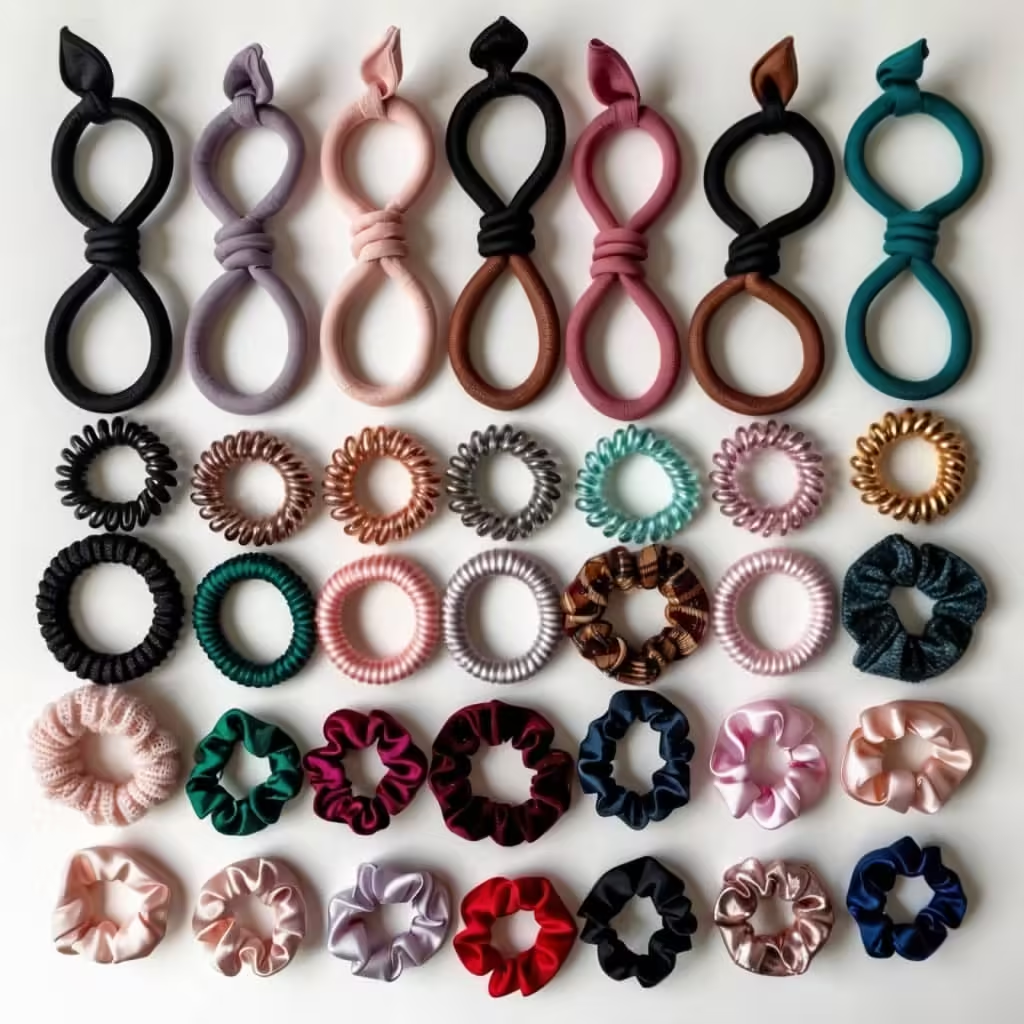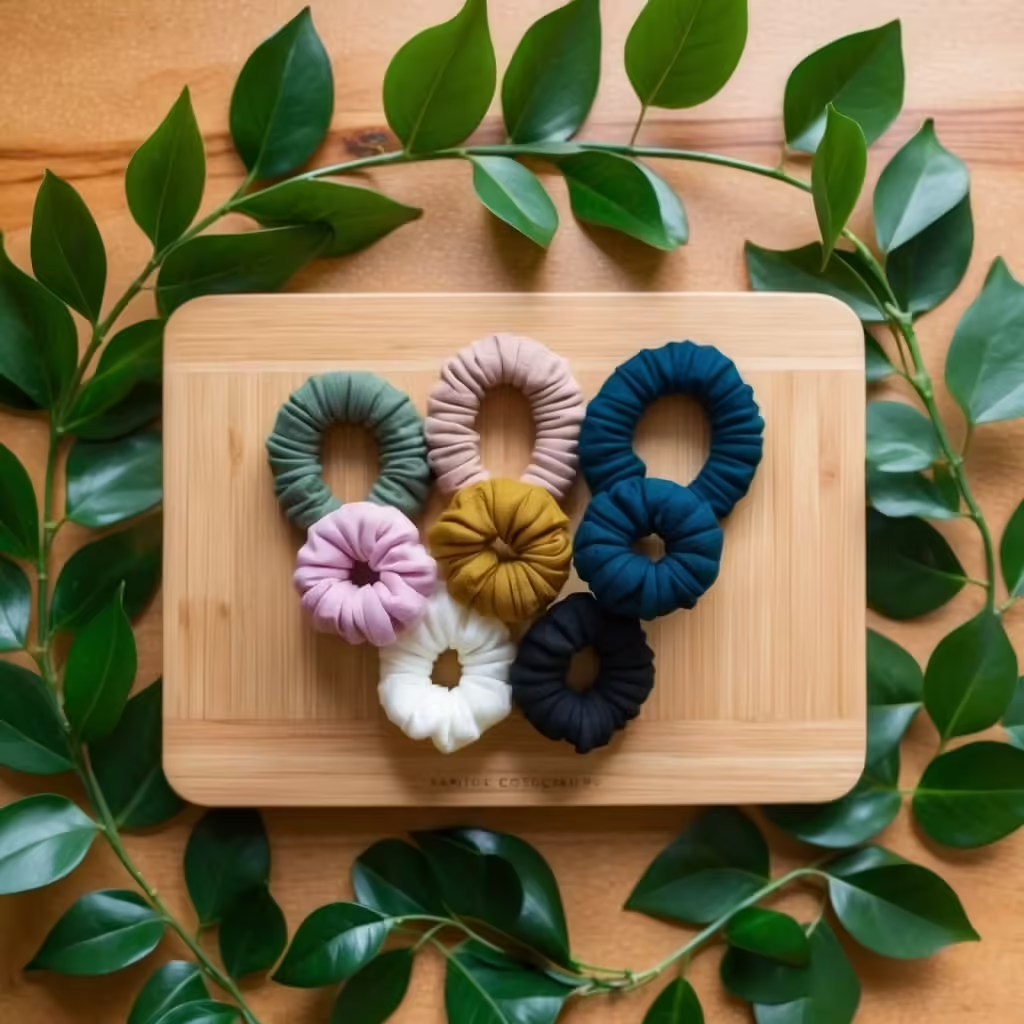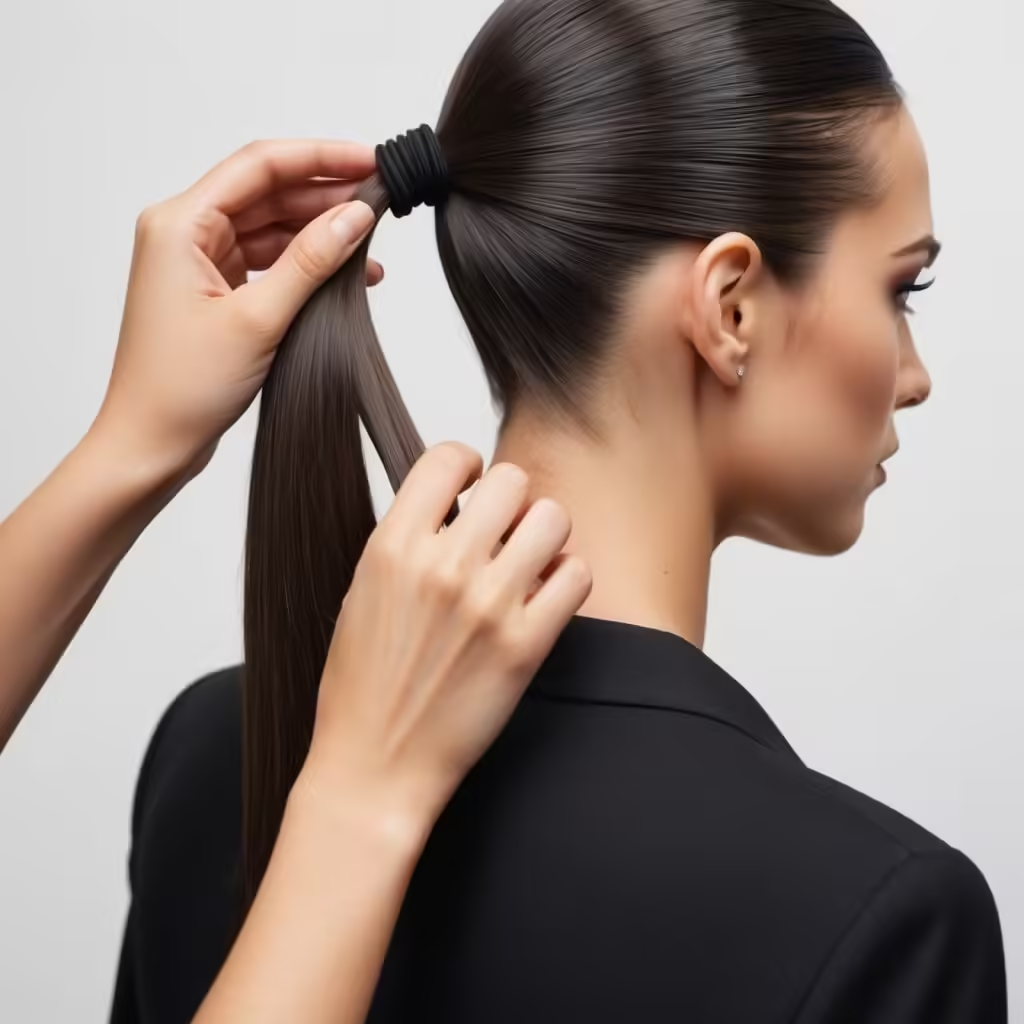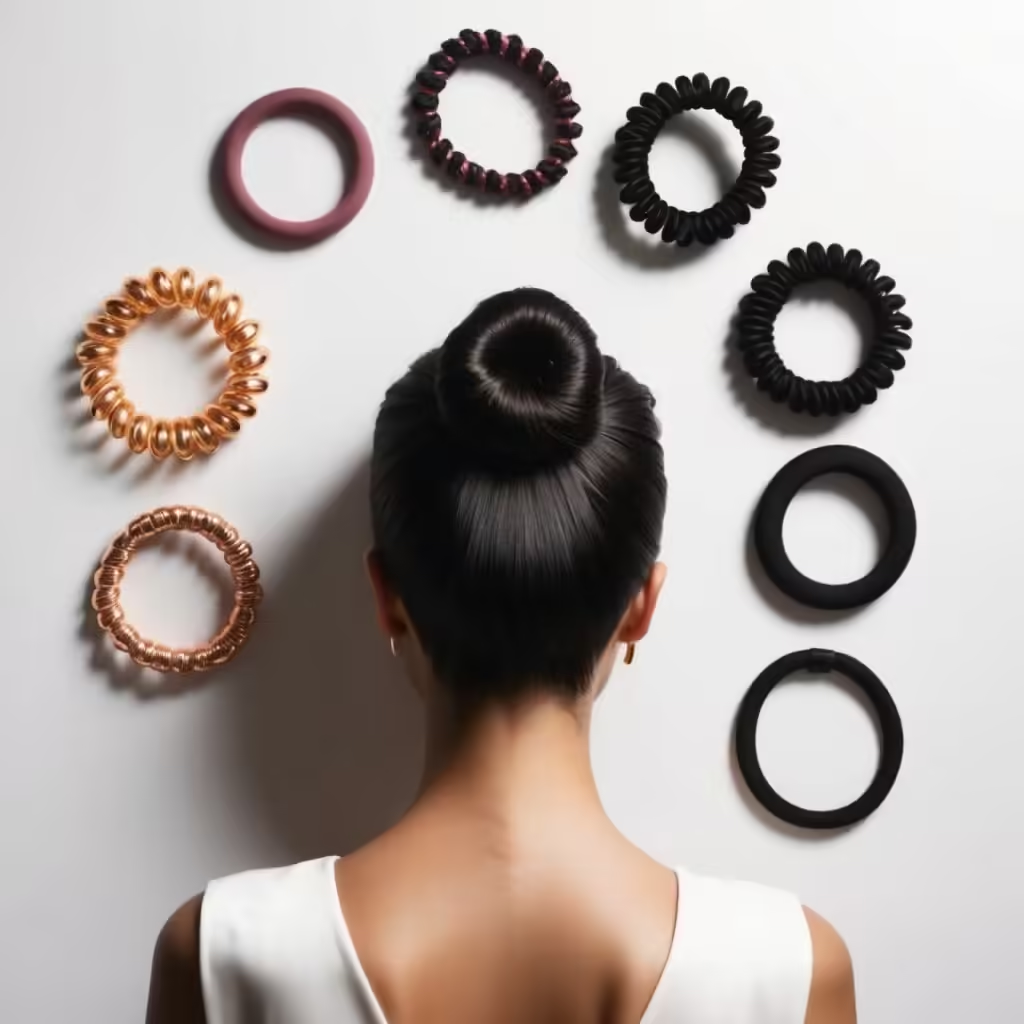Hair ties—those small but mighty accessories—are essential in our daily routines, keeping our hair in check while adding flair to our styles. But there’s more to hair bands than meets the eye. From different types to the materials they’re made from, and even how they affect your hair’s health, hair bands have evolved into versatile and important accessories. Let’s dive deep into the world of hair ties and uncover everything you need to know.
The History of Soft Ties
The Evolution of Hair Accessories
Before the invention of modern hair bands, ancient civilizations used various materials such as strips of leather, fabric, or even vines to secure their hair. Hair accessories have been a part of human culture for thousands of years, reflecting fashion, utility, and status.
The Birth of the Modern Hair Tie
The elastic hair tie as we know it today emerged in the late 19th century with the invention of rubber and elastic materials. From that moment, hair styling became easier and more convenient. Over time, the humble hair tie transformed into the stylish scrunchies, spiral ties, and slip hair ties we know today.
Types of Hair Bands

Soft ties come in various styles, each serving a different purpose. Let’s break down the most popular types:
Elastic Hair Ties
Elastic hair bands are the classic type—simple, stretchy, and perfect for everyday use. They come in different sizes, ideal for both casual and formal hairstyles. If you’re looking to explore other hair accessories like hair bows, check out Hair Bows: The Ultimate Guide for more style inspiration.
Scrunchies
Scrunchies made a huge comeback from their 80s fame, becoming a trendy and comfortable option. They’re gentle on hair and are available in a variety of fabrics and patterns.
Spiral Hair Ties
Spiral hair bands are coiled like a telephone cord, and their design helps reduce tension on hair strands, minimizing breakage. They’re great for those with delicate hair, offering a no-dent solution.
Ribbon Hair Ties
Ribbon hair bands are softer and wider than traditional elastics. They hold hair in place without pulling or causing dents, making them ideal for loose, relaxed hairstyles.
Hair Tie Brown Plastic Hook
A newer trend in the market is hair tie brown plastic hooks, which provide an adjustable option for securing hair. These are especially useful for those looking to avoid pulling or damaging their strands with traditional elastics.
Materials Used in Hair Bands
Fabric-Based Hair Ties
Hair bands made from fabric, like scrunchies, are often softer on the hair, reducing the risk of breakage and discomfort. Velvet, cotton, and satin are popular fabric choices.
Rubber-Based Hair Ties
Rubber-based ties provide a strong grip, making them perfect for intense activities. However, they can cause breakage if used too frequently or tied too tightly. Some creative DIYers have even turned rubber hair ties into fun projects like rubber hair tie gun popsicles diy.
How to Choose the Right Tie for Your Hair Type
Hair Ties for Fine Hair
For fine hair, choose lightweight and soft hair elastic, like fabric scrunchies or ribbon ties. These options provide enough hold without causing damage or leaving marks.
Hair Ties for Thick Hair
Thicker hair requires stronger elastic hair bands that won’t snap under pressure. Spiral hair bands or reinforced elastics are great for keeping thick hair in place.
Hair Ties for Curly Hair
Curly hair benefits from hair bands that reduce friction. Silk or satin scrunchies are ideal for preventing tangles and keeping curls intact without causing frizz.
Hair Tie Care: How to Prolong Their Lifespan
Cleaning Ties
Hair ties can accumulate oils and product residue over time. Cleaning them regularly by soaking in warm water with a mild detergent will extend their lifespan and keep them hygienic.
Proper Storage Tips
Store your hair elastic in a cool, dry place. Avoid throwing them into a bag where they can get stretched out or tangled with other items.
The Impact of Hair Bands on Hair Health
Hair Breakage and Damage
Using hair ties too tightly or for extended periods can lead to breakage. Opt for soft, gentle ties that don’t tug at your hair. Hair health is not only influenced by the accessories we use but also by what we put into our bodies. Nutrition plays a key role in maintaining hair strength, and deficiencies can exacerbate hair damage. Learn more about how nutrition impacts hair health, including the role of essential vitamins and minerals in hair growth. For more detailed insights into how hair ties can cause hair damage and ways to protect your hair, explore this resource.
Reducing Hair Tension
To avoid unnecessary tension on your scalp, alternate your hairstyles and avoid tying your hair too tightly. Loose buns or ponytails can still look stylish while being gentler on your hair.
Eco-Friendly Hair Tie Alternatives

Sustainable Fabrics
Eco-conscious individuals may prefer hair bands made from sustainable materials like organic cotton or recycled fabrics. These alternatives are better for both your hair and the environment.
Biodegradable Hair Ties
Some brands now offer biodegradable hair bands that decompose naturally over time, reducing plastic waste. Brands like Gimme hair ties have made strides in offering eco-friendly solutions without compromising quality.
Styling Tips For Hair Ties

Creating Sleek Ponytails
For a smooth, sleek ponytail, use an elastic hair tie and finish with a light mist of hairspray to keep flyaways in check.
Messy Buns for Every Occasion
A messy bun can be both casual and elegant. Use a soft scrunchie to achieve this effortless look, adding texture to your hair without harsh lines.
Braided Styles Using Hair Ties
Secure braids with small elastic ties to keep them looking neat without distracting from the style.
How to Avoid Hair Tie Marks
Loose Tying Techniques
To avoid hair dents, avoid tying your hair too tightly. Looser ponytails or buns can give you a relaxed look without the telltale mark of a tight tie.
Opting for Soft Ties
Choose hair bands made of soft materials like satin or velvet, which are less likely to leave creases in your hair.
Popular Hair Tie Brands
Goody Hair Ties
Goody is a household name in hair care, offering a range of durable, budget-friendly hair bands for all hair types.
Invisibobble
Invisibobble’s spiral design is perfect for those looking to minimize hair damage and tension.
Slip Silk Scrunchies
Slip’s silk scrunchies are luxurious and gentle on your hair, perfect for reducing breakage while adding style.
DIY Hair Ties: Make Your Own at Home
Easy Sewing Methods
With basic sewing skills, you can create your own scrunchies at home using leftover fabric. It’s a fun and sustainable way to customize your hair accessories.
No-Sew Hair Tie Tutorials
If sewing isn’t your thing, there are plenty of no-sew tutorials online that show you how to create soft ties using simple methods like knotting fabric strips.
Fun Facts About Ties
- Did you know the average person loses more than 10 soft ties a year?
- The scrunchie was invented by a woman named Rommy Revson in 1986!
- Toy gun rubber hair tie gun popsicles diy is an emerging DIY trend that turns rubber hair bands into innovative tools for craft projects.
Conclusion: Why Hair bands Are More Than Just Accessories
Hair ties are an essential part of our daily routines, but they’re more than just functional—they’re a way to express personal style. With so many options available, from eco-friendly alternatives to luxurious scrunchies, there’s a hair tie for every occasion and every hair type.
FAQs
- How often should I replace my hair ties?
It’s a good idea to replace them when they lose elasticity or show signs of wear, such as fraying or stretching. - Can hair ties cause headaches?
Yes, wearing your hair too tightly with a hair tie can lead to tension headaches. Opt for looser styles if this happens often. - Are certain hair ties better for curly hair?
Yes, silk or satin scrunchies are great for curly hair as they reduce friction and help maintain curl shape. - What’s the most eco-friendly hair tie option?
Look for hair ties made from biodegradable materials or recycled fabrics to minimize your environmental impact. - Can I make my own hair ties at home?
Absolutely! With basic sewing skills or a simple no-sew method, you can create your own custom hair bands. - Why do cats like hair ties?
Cats are attracted to hair ties because they’re small, lightweight, and easy to bat around, making them resemble prey. The elastic movement mimics the unpredictability of something alive, which triggers a cat’s hunting instincts. - Can you tie up hair after OptiSmooth?
After an OptiSmooth treatment, it’s best to avoid tying your hair up for at least 48 hours. This allows the hair to set in its new, smoother form without causing any bends or creases from hair ties. - Can you use a hair tie on flat ironed hair?
Yes, you can use a hair tie on flat ironed hair. However, to avoid dents or creases, opt for a soft, loose hair tie like a scrunchie or spiral band to maintain the smooth, straight look of your hair.

